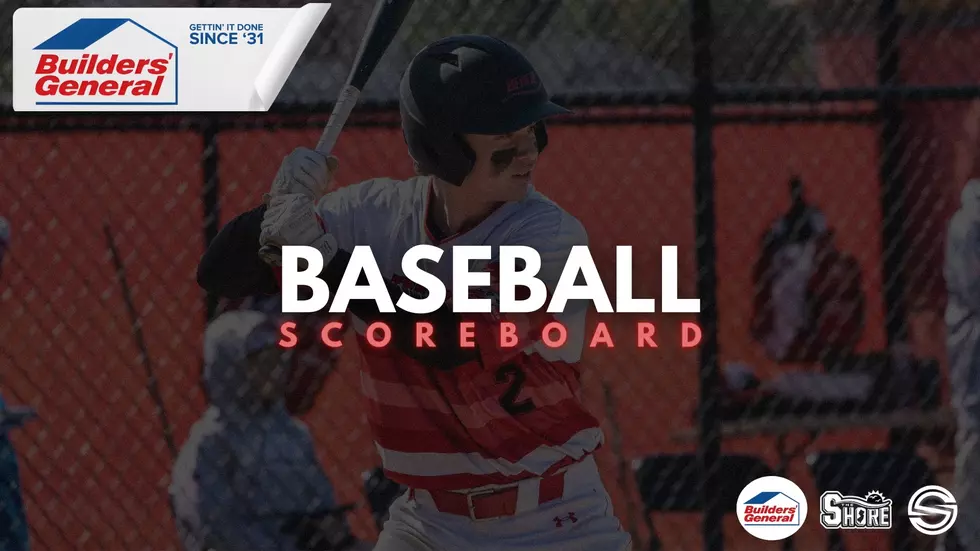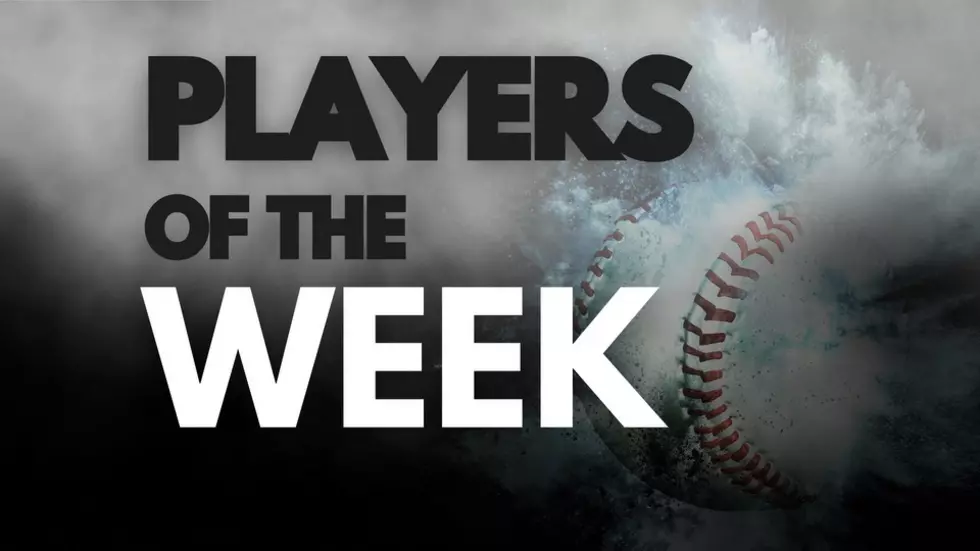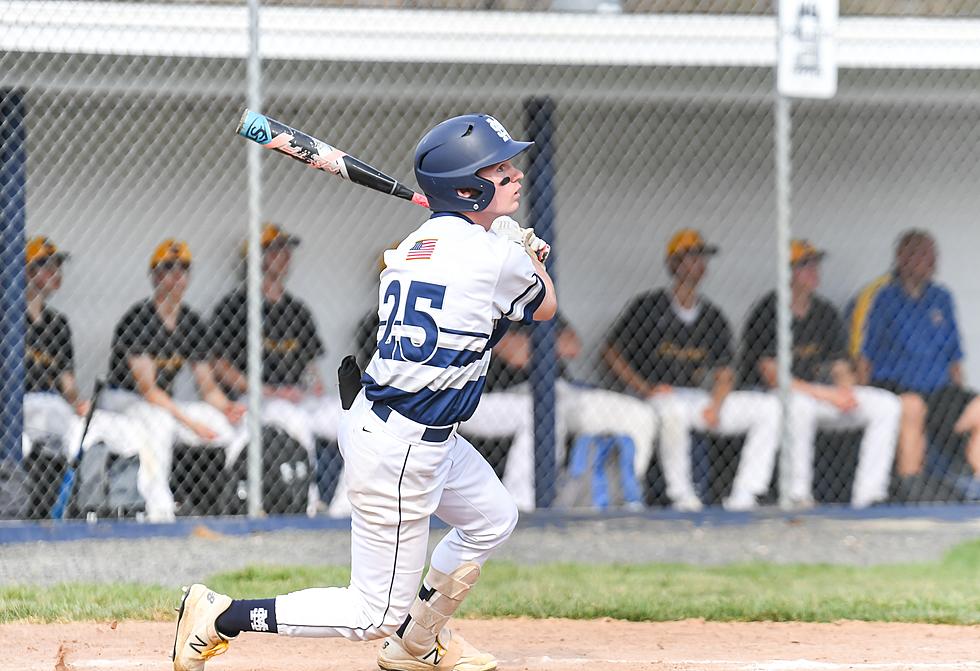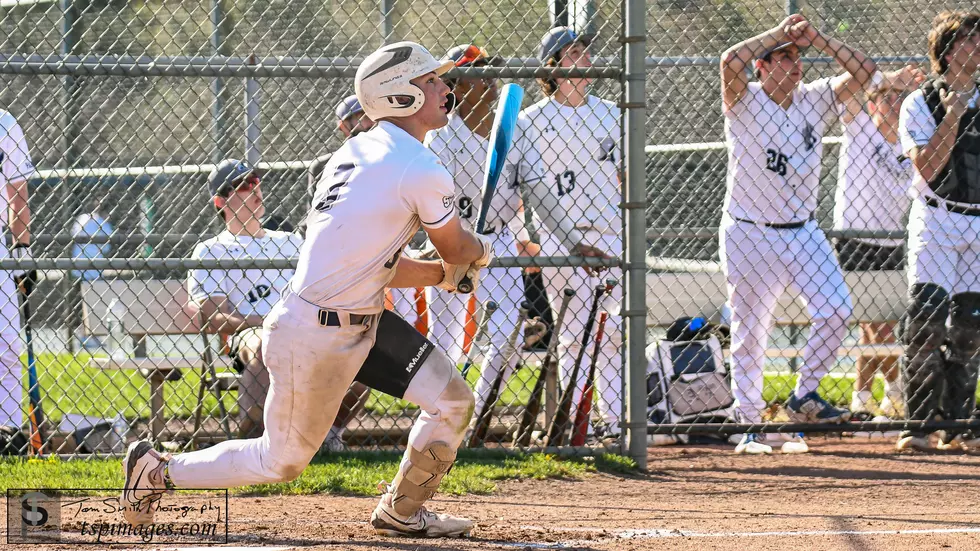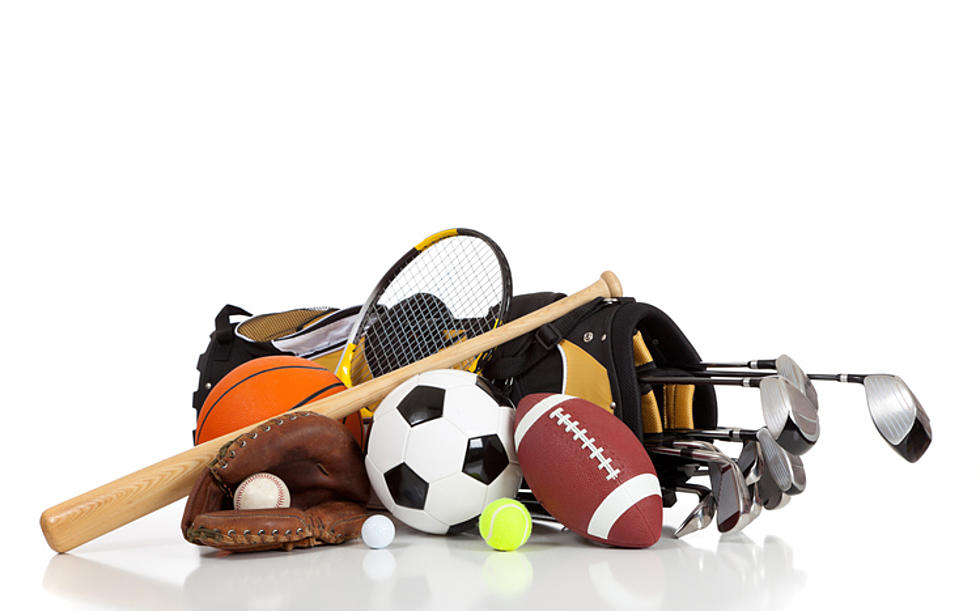
National Federation of High Schools releases guidelines for opening up high school sports

Up until the day New Jersey Governor Phil Murphy announced that all N.J. schools would close for the 2019-20 year due to the COVID-19 pandemic, the NJSIAA maintained its commitment to providing a spring sports season if there was an opportunity.
Beyond the sports season being attached to the reopening of schools, the greatest challenge according to most administrators, coaches and athletic trainers was the lack of guidelines for moving forward and the liabilities that would come with moving forward without them.
On Tuesday, the National Federation of High School Sports finally laid out guidelines for restarting sports in the fall, including practices in the summer.
The 16-page press release includes a three-phase plan to resume high-school athletics and other extracurricular activities, but is still dependent on state and local laws and protocol - particularly in the group of "higher-risk" activities that includes football.
The Three Risk Tiers
The release separates sports into three risk categories, with football, wrestling, boys lacrosse, competitive cheer and dance considered the "higher-risk" sports that will be most restricted by the guidelines set forth during the three-part phase-in.
Football coaches may have a work-around built in for summer practices thanks to the provision considering 7-on-7 football a "moderate risk" activity, along with basketball, soccer, ice hockey, field hockey, girls lacrosse, swimming relays, water polo and crew with two or more rowers in shell.
Baseball, softball, volleyball, tennis and gymnastics, as well as the pole vault, high jump and long jump events under the track-and-field umbrella, are also considered moderate risk but could be classified as "low risk" if the equipment is appropriately cleaned and participants use masks. In the case of gymnastics, equipment would have to be sufficiently cleaned between use by each competitor in order to qualify as low risk.
The "low-risk" group includes individual running and throwing events in track and field, cross country running (with staggered starts), golf, individual swimming, weightlifting, sideline cheer, alpine skiing and single sculling.
The Early Phases
Each phase of the plan requires thorough cleaning of equipment, an abundance of hand-sanitizer, no sharing of water bottles, showering at home and social distancing that follows the guidelines of the CDC and health department of the state in question.
The first two phases would require screenings before each practice that includes temperature checks, the results of which are to be recorded daily. Players and coaches considered to be "vulnerable individuals" (65 years old and older and others with serious underlying health risks listed by the CDC) are not to participate during the first two phases of the plan.
All sports would face the same restrictions during Phase 1, although the nature of the higher and moderate risk sports would limit the scope of practices during that phase. Among the most noteworthy restrictions during Phase 1 is that teams would not be able touch the same piece of equipment without first sanitizing it, which would prevent the passing of a ball in sports like basketball, football, baseball, soccer or volleyball. The release specifically noted players shooting their own basketball or batting practice with one pitcher and no catcher would be within the guidelines.
Other restrictions in phase one include no gatherings of more than 10 people, no use of the locker room and no weight room exercises that require a spotter.
In both Phase 1 and Phase 2, athletes would be broken up into "pods" of 5-to-10 participants within practices and hydration stations would not be permitted. Each person would be expected to use their own bottle. These pods would be expected to contain the same participants in each practice in order to limit the exposure in case someone were to test positive.
The NFHS also recommends athletes wear masks during Phases 1 and 2 when not performing strenuous, aerobic activity.
Some "Normal" Practices Return in Phase 2
Phase 2 would grant low-risk sports clearance to start normal practices and competitions. Outside gatherings, meanwhile, would be expanded to allow for up to 50 people while indoor gatherings would still be limited to 10 with locker rooms also opened up with social-distancing of at least six feet in place.
Moderate-risk sports could also begin modified practices in Phase 2. Balls and other frequently-used equipment would have to be cleaned intermittently and the pod-system (with 5-to-10 in each pod) would still be in use. Weightlifting requiring a spotter would be permitted, but spotters must be positioned at the ends of the bar rather than in close proximity to the lifter.
High-Risk Sports Return, But Limited
In Phase 3, moderate-risk sports could begin something resembling normal practices and competition, with gatherings of 50 permitted both outside and inside. Moderate-risk and lower-risk sports would also no longer have to do a full pre-practice screening. Participants with a fever or cold-like symptoms within 24 hours of practice or competition would not be permitted to participate and attendance would be taken before each practice or competition.
Vulnerable individuals would also be cleared to resume participation in Phase 3 with physical distancing measures. Hydration stations would also be permitted in Phase 3 provided they are thoroughly cleaned after each practice or competition.
During Phase 3, higher-risk sports will finally be cleared to resume modified practices and would be required to use the pre-practice screening guidelines from Phases 1 and 2.
*A table illustrating the protocols for each phase can be found at the bottom of this story.*
New Protocols Will Stretch Limited Budgets
The NFHS also stressed physical distancing on sidelines, benches, dugouts and buses. With distancing mandated to extend to buses, Monday's press release acknowledged the likelihood that multiple buses would likely be required, which could exacerbate transportation scheduling issues that already existed for many schools and districts.
There is also a paradox related to athletic trainers: few positions within an athletic department would be more crucial in executing this plan and yet those are positions that could be eliminated as state and local governments begin to face the financial weight of the current crisis.
"Given the coming financial crisis at the state and local levels, the NFHS SMAC fears that athletic trainer positions will be seen as a 'luxury' and those positions will be at risk during the budgeting process," the release said. "It is also assumed that athletic trainers supplied to high schools by hospitals and sports medicine clinics are also at risk as many medical clinics and hospitals have suffered severe revenue loss during the pandemic."
Spectators May Have to Wait
Finally, the permission of spectators to attend games will be based on the state's restrictions on public gatherings at the time. The NFHS lays out three tiers of attendees for high-school events.
Tier 1 is considered "essential" and includes athletes, coaches, officials, medical staff, event staff and security. Tier 2 is considered "preferred" and includes media personnel. Tier 3 is considered "non-essential" and includes all spectators and vendors.
According to the release, Tiers 1 and 2 will be permitted to attend events when they first begin but Tier 3 will not be permitted until restrictions on mass-gatherings are lifted.
Risks Remain
The caveat attached to the NFHS plan is that all provisions are intended to operate within the bounds of state and local law and protocol and New Jersey remains the second-hardest-hit state by COVID-19, behind New York. Other states are likely to proceed with the initial phase before N.J. and there could be areas within the state that are not prepared to start when others are.
The release points out that school closures and isolation periods spanning two-to-three weeks are likely to be part of the process, although some of the more important measures will be determined by state and CDC guidelines. Testing regimens, guidelines on mass gatherings and responses to positive COVID-19 tests will come from those state and federal bodies.
Because any schedule would still be volatile, the NFHS is recommending competition be limited to opponents the are in close proximity to one another early in the season - both in mitigating risk of exposure and in making it easier to reschedule in the event of a postponement.
| Phase 1 | Phase 2 (differences or in addition to Phase 1) | Phase 3 |
|---|---|---|
| Pre-workout Screening: Phase 1 | Pre-workout Screening: Phase 2 (differences or in addition to Phase 1) | Pre-workout Screening: Phase 3 |
| All coaches and students should be screened for signs/symptoms of COVID-19 prior to a workout. Screening includes a temperature check. Responses to screening questions for each person should be recorded and stored so that there is a record of everyone present in case a student develops COVID-19 (see Appendix II for sample Monitoring Form). Any person with positive symptoms reported should not be allowed to take part in workouts and should contact his or her primary care provider or other appropriate health-care professional. Vulnerable individuals should not oversee or participate in any workouts during Phase 1. | Same as Phase 1 | Any person who has had a fever or cold symptoms in the previous 24 hours should not be allowed to take part in workouts and should contact his or her primary care provider or other appropriate health- care professional. A record should be kept of all individuals present. Vulnerable individuals can resume public interactions, but should practice physical distancing, minimizing exposure to social settings where distancing may not be practical, unless precautionary measures are observed. |
| Limitations on Gatherings: Phase 1 | Limitations on Gatherings: Phase 2 (differences or in addition to Phase 1) | Limitations on Gatherings: Phase 3 |
| No gathering of more than 10 people at a time (inside or outside). Locker rooms should not be utilized during Phase 1. Students should report to workouts in proper gear and immediately return home to shower at end of the workout. Workouts should be conducted in “pods” of students with the same 5-10 students always working out together. Smaller pods can be utilized for weight training. This ensures more limited exposure if someone develops an infection. There must be a minimum distance of 6 feet between each individual at all times. If this is not possible indoors, then the maximum number of individuals in the room must be decreased until proper social distancing can occur. | No gathering of more than 10 people at a time inside. Up to 50 individuals may gather outdoors for workouts. If locker rooms or meeting rooms are used, there must be a minimum distance of 6 feet between each individual at all times. There must be a minimum distance of 6 feet between each individual at all times. If this is not possible indoors, then the maximum number of individuals in the room must be decreased until proper social distancing can occur. Appropriate social distancing will need to be maintained on sidelines and benches during practices. Consider using tape or paint as a guide for students and coaches. | Gathering sizes of up to 50 individuals, indoors or outdoors. When not directly participating in practices or contests, care should be taken to maintain a minimum distance of 3 to 6 feet between each individual. Consider using tape or paint as a guide for students and coaches. |
| Facilities Cleaning: Phase 1 | Facilities Cleaning: Phase 2 (differences or in addition to Phase 1) | Facilities Cleaning: Phase 3 |
| Adequate cleaning schedules should be created and implemented for all athletic facilities to mitigate any communicable diseases. Prior to an individual or groups of individuals entering a facility, hard surfaces within that facility should be wiped down and sanitized (chairs, furniture in meeting rooms, locker rooms, weight room equipment, bathrooms, athletic training room tables, etc.). Individuals should wash their hands for a minimum of 20 seconds with warm water and soap before touching any surfaces or participating in workouts. Hand sanitizer should be plentiful and available to individuals as they transfer from place to place. Weight equipment should be wiped down thoroughly before and after an individual’s use of equipment. Appropriate clothing/shoes should be worn at all times in the weight room to minimize sweat from transmitting onto equipment/surfaces. Any equipment such as weight benches, athletic pads, etc. having holes with exposed foam should be covered. Students must be encouraged to shower and wash their workout clothing immediately upon returning to home. | Same as Phase 1 | Same as Phase 1 and Phase 2 |
| Physical Activity and Athletic Equipment: Phase 1 | Physical Activity and Athletic Equipment: Phase 2 (differences or in addition to Phase 1) | Physical Activity and Athletic Equipment: Phase 3 |
| There should be no shared athletic equipment (towels, clothing, shoes, or sports specific equipment) between students. Students should wear their own appropriate workout clothing (do not share clothing) individual clothing/towels should be washed and cleaned after every workout. All athletic equipment, including balls, should be cleaned after each use and prior to the next workout. Individual drills requiring the use of athletic equipment are permissible, but the equipment should be cleaned prior to use by the next individual. Resistance training should be emphasized as body weight, sub-maximal lifts and use of resistance bands. Examples (including by limited to): —A basketball player can shoot with a ball(s), but a team should not practice/pass a single ball among the team where multiple players touch the same ball. —A football player should not participate in team drills with a single ball that will be handed off or passed to other teammates. Contact with other players is not allowed, and there should be no sharing of tackling dummies/donuts/sleds. —A volleyball player should not use a single ball that others touch or hit in any manner. —Softball and baseball players should not share gloves, bats, or throw a single ball that will be tossed among the team. A single player may hit in cages, throw batting practice (with netting as backstop, no catcher). Prior to another athlete using the same balls, they should be collected and cleaned individually. —Free weight exercises that require a spotter cannot be conducted while honoring social distancing norms. Safety measures in all forms must be strictly enforced in the weight room. —Wrestlers may skill and drill without touching a teammate. —Cheerleaders may not practice/perform partner stunts or building. (Chants, jumps, dances without contact are permissible.) —Tennis players may do individual drills, wall volleys and serves. —Runners should maintain the recommended 6 feet of distancing between individuals | Lower risk sports practices and competitions may resume (see Potential Infection Risk by Sport below). Modified practices may begin for Moderate risk sports. There should be no shared athletic towels, clothing or shoes between students. Students should wear their own appropriate workout clothing (do not share clothing), and individual clothing/towels should be washed and cleaned after every workout. All athletic equipment, including balls, should be cleaned intermittently during practices and contests. Hand sanitizer should be plentiful at all contests and practices. Athletic equipment such as bats, batting helmets and catchers gear should be cleaned between each use. Maximum lifts should be limited and power cages should be used for squats and bench presses. Spotters should stand at each end of the bar. | Moderate risk sports practices and competitions may begin. There should be no shared athletic towels, clothing or shoes between students. Students should wear their own appropriate workout clothing (do not share clothing), and individual clothing/towels should be washed and cleaned after every workout. Hand sanitizer should be plentiful at all contests and practices. Athletic equipment such as bats, batting helmets and catchers gear should be cleaned between each use. Other equipment, such as hockey helmets/pads, wrestling ear guards, football helmets/other pads, lacrosse helmets/pads/gloves/eyewear should be worn by only one individual and not shared. Maximum lifts should be limited and power cages should be used for squats and bench presses. Spotters should stand at each end of the bar. Modified* practices may begin for Higher risk sports: *Continue pre-practice screening as in Phases 1 and 2. Shower immediately after practices/contests. Re-assess epidemiology data and experiences in other states and other levels of competition to determine when Higher risk sports competition may resume. |
| Hydration: Phase 1 | Hydration: Phase 2 (differences or in addition to Phase 1) | Hydration: Phase 3 |
| All students shall bring their own water bottle. Water bottles must not be shared. Hydration stations (water cows, water trough, water fountains, etc.) should not be utilized. | Same as Phase 1 | All students shall bring their own water bottle. Water bottles must not be shared.
Hydration stations (water cows, water trough, water fountains, etc.) may be utilized but must be cleaned after every practice/contest. |
KEEP READING: See how sports around the world have been impacted by the coronavirus
More From Shore Sports Network
